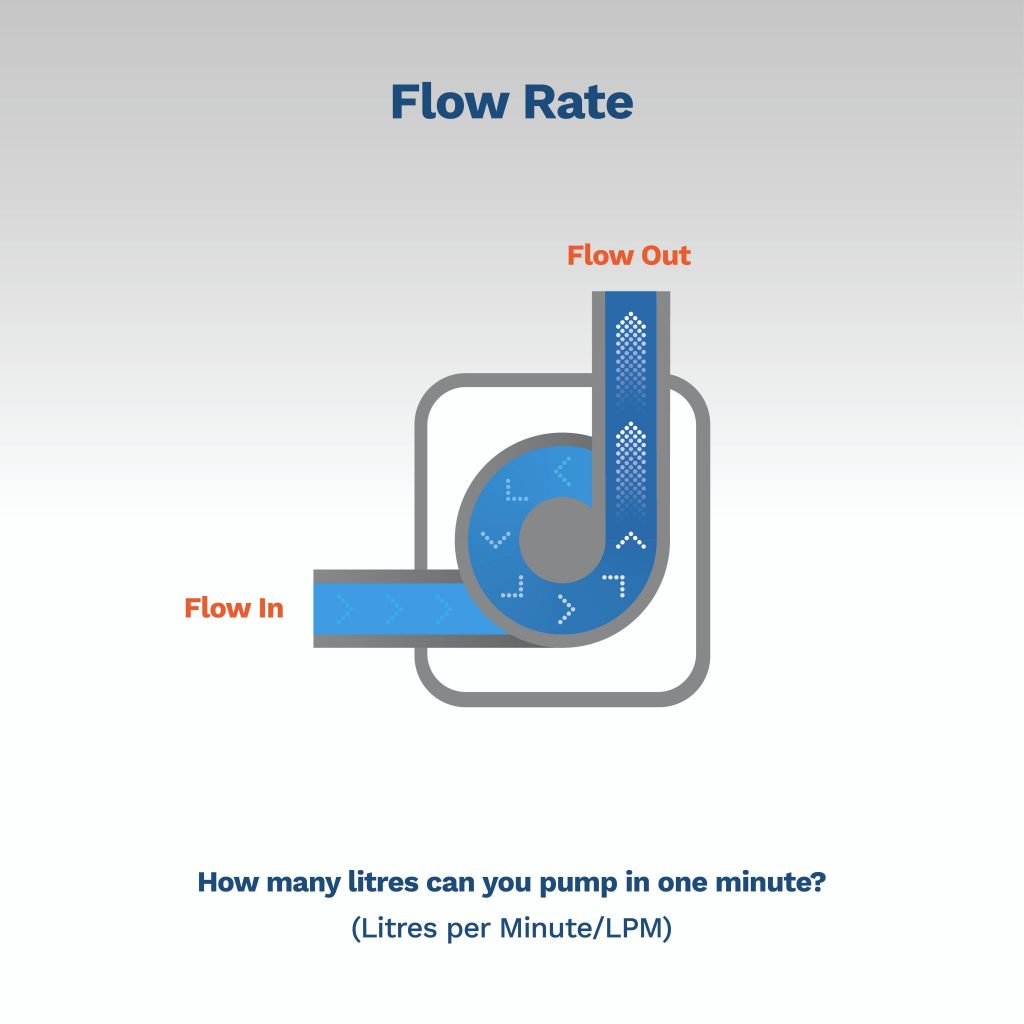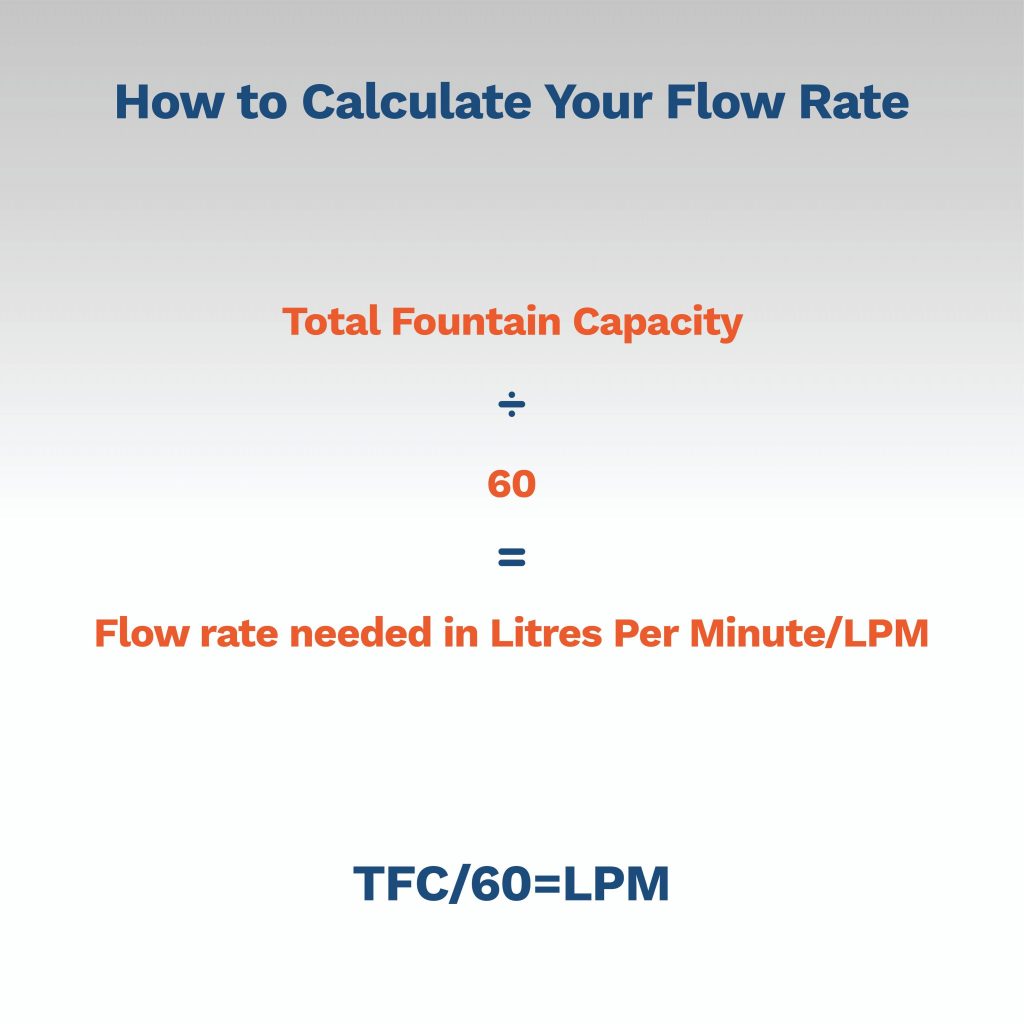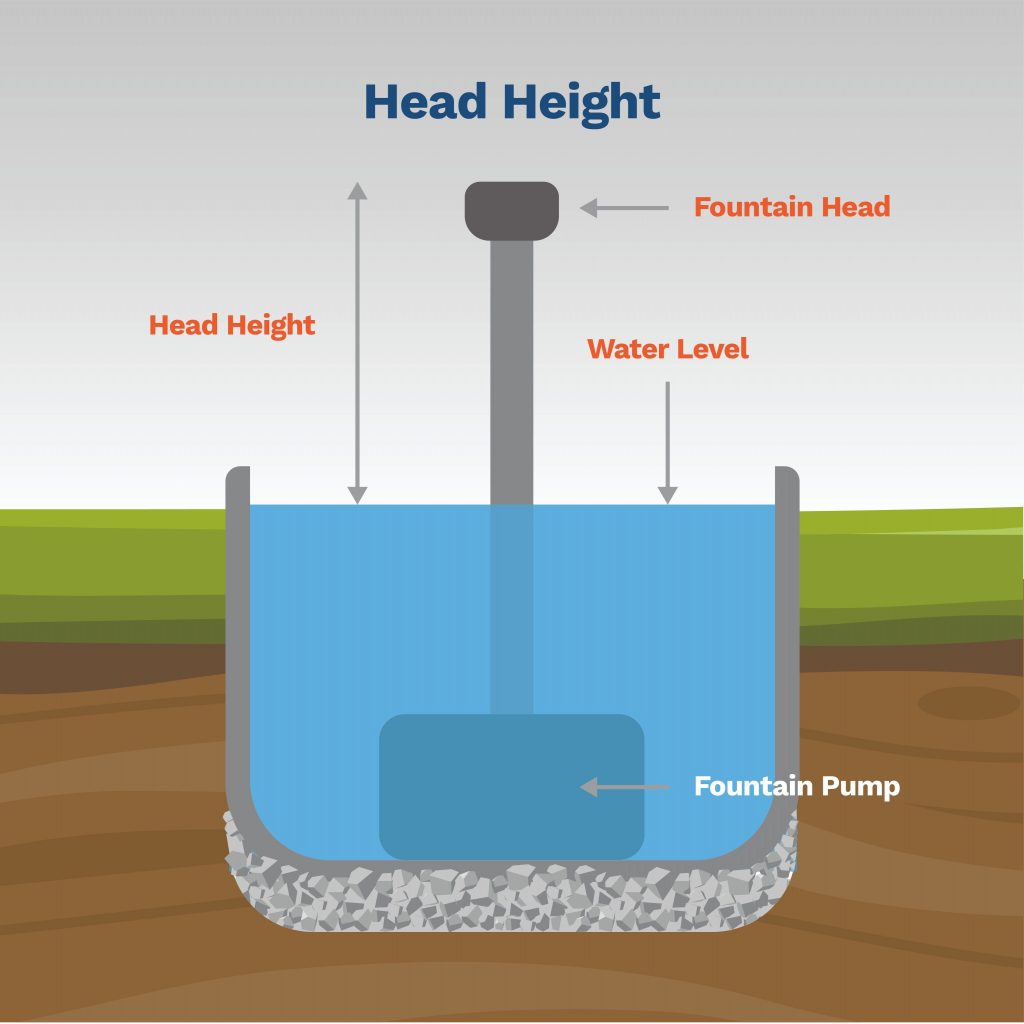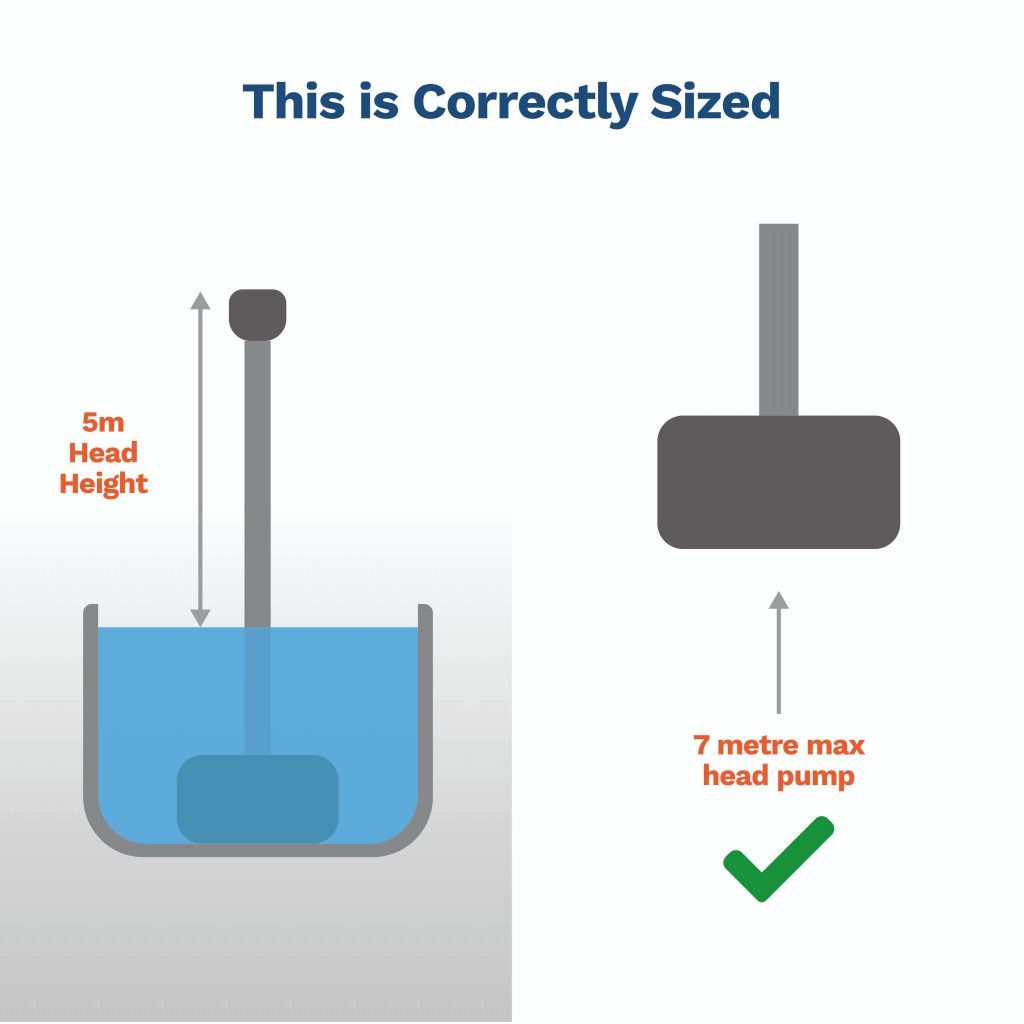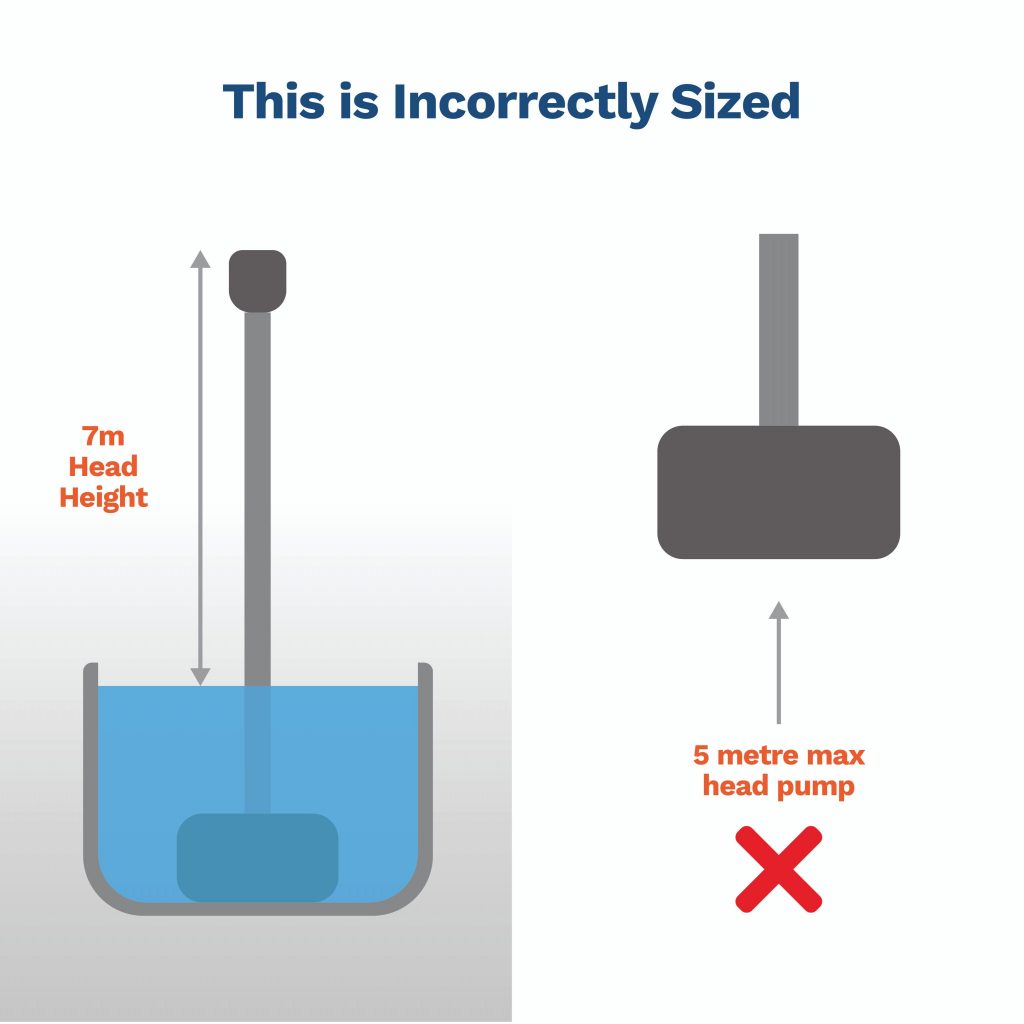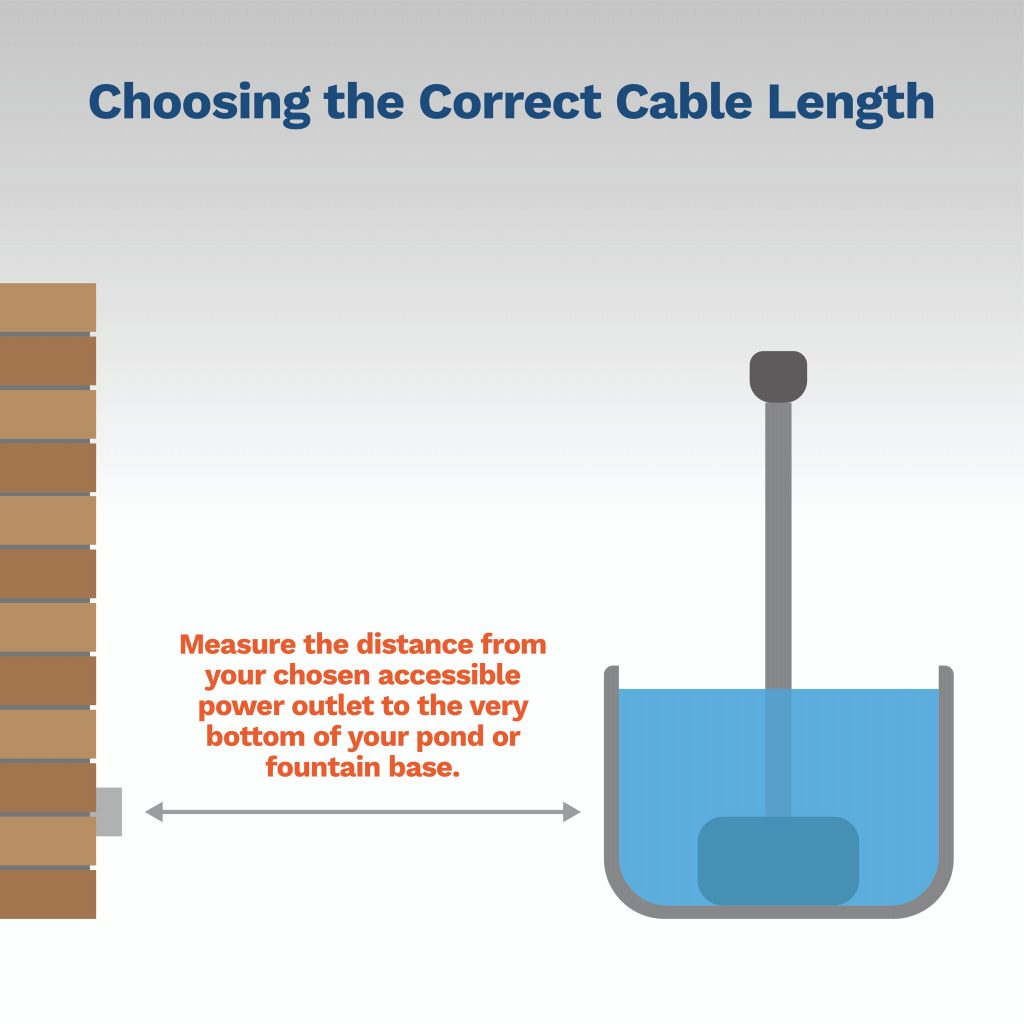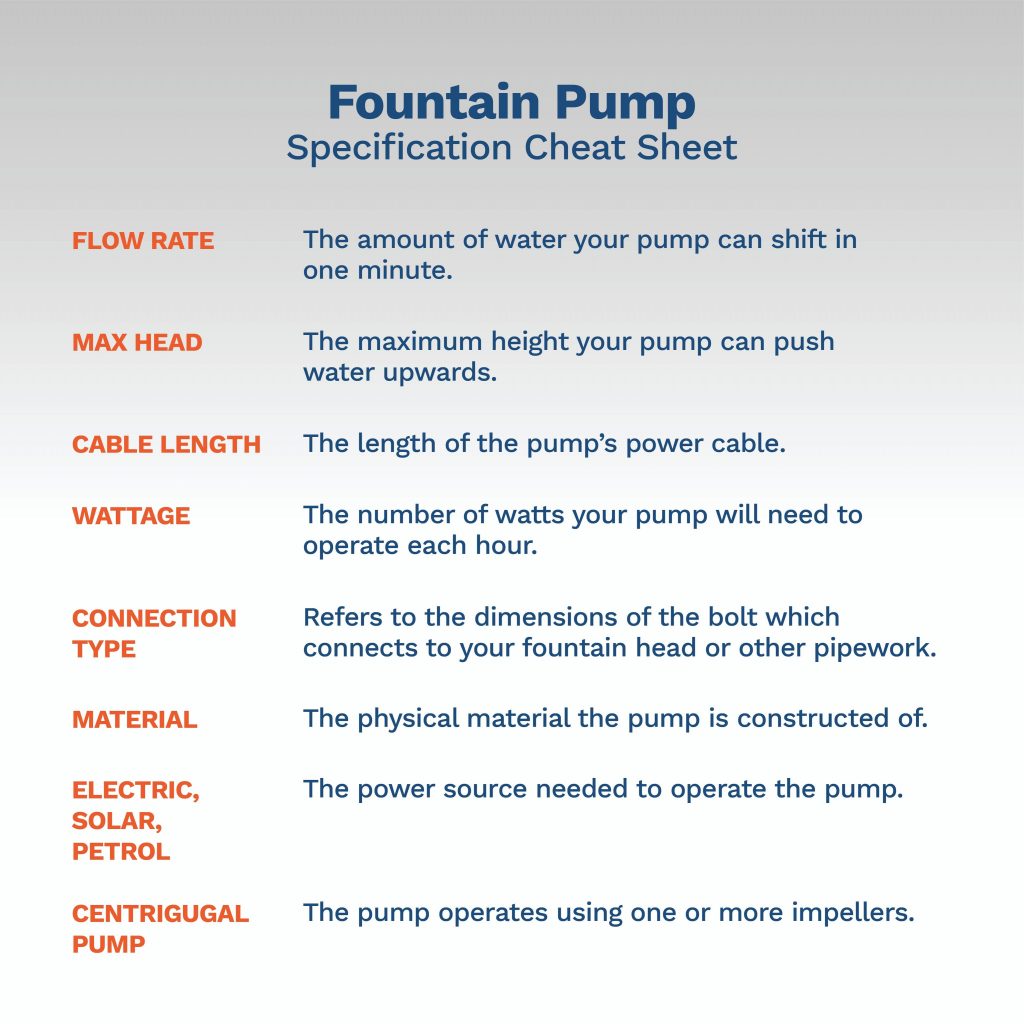What Size Pump Do You Need For Your Water Feature? (Expert Guide)
This is the expert guide to water feature pump sizing. It covers:
- What flow rate does my water feature pump need?
- What max head does my water feature pump need?
- What cable length does my water feature pump need?
So, if you're struggling to figure out which pump is right for your project, this is the guide for you.
Let's get started.
What flow rate does my water feature pump need?
Flow rate is the term used to describe the amount of water flowing through your pump over a period of time. In the UK, flow rate is calculated in Litres per Minute/LPM (not Gallons per Hour/GPH, which is the US calculation). For example:
A pump with a 10/LPM (Litres per Minute) flow rate will filter and pump 10 litres of water in one minute.
Now, it is advised that the water in your fountain is circulated at least once per hour. If you have a 7000-litre fountain, you need a pump that can comfortably circulate 7000 litres of water in one hour. So, to determine what flow rate you need, simply divide the total water capacity of your pond by 60. For example:
With a 7000 litre fountain, simply divide 7000 by 60 = 116.6. In this case, you need a pump with a flow rate above 116.6/LPM.
What head does my water feature pump need?
The head height is another key specification you'll need to know when buying a water feature pump. The head height refers to the distance between the water level and your fountain head.
To find your head height, simply measure the distance between the water level and your fountain head.
However, when buying the pump, you will not see the phrase "head height" on the pump's specification.
Instead, you will see what is called "Max Head". This is the maximum head height rating at which your pump can push the water straight up. For example:
A pump with a max head of 7 metres, can push water to a maximum of 7 metres straight up.
So, to find the correct max head for your fountain, all you need to do is ensure the max head of the water feature pump is greater than the head height of your fountain. Take a look at the two examples below:
In the above example, you can see that the max head of the pump is greater than the head height of the fountain.
Conversely, in this example, you can see that the max head of the pump is less than the head height of the fountain. In this case, the pump will fail to push the water up and out of the fountain head.
What cable length does my water feature pump need?
It may seem a tad bit stupid, but you should also pay special attention to the cable length of the fountain pump. Some fountain pumps come with extra-long cables which are ideal for plugging into a power outlet in the garage or another accessible power outlet. Other pumps are often designed in the traditional submersible pump style, which are usually used in commercial settings, such as a building site, where they can be easily connected to a generator. In a residential setting, this is, of course, quite unpractical.
To find the right cable length for your pond pump, simply measure the distance from your chosen accessible power outlet to the very bottom of your pond or water basin. Make sure you take into account any trees or bushes which may require a bit of slack to navigate tricky branches or tree stumps.
Pump Specification Cheat Sheet
There are some other specs on your fountain pump that you should be aware of, but the only specs that are critical to sizing your pump are Flow Rate, Max Head and Cable Length. However, saying that, knowing what all these different specs are, can help you make a better, more informed choice. To help you out, we've put together this simple pump specification cheat sheet. This covers all the different specifications you might find when purchasing a water feature pump and what exactly they all mean.
Electric Pumps
The majority of pond or fountain pumps are electric. This simply means you need an electric power outlet to operate the pump.
Solar Pumps
There are a growing number of solar-powered pumps on the market. This will be quite obvious from the design of the pump, as they are often covered in solar panels. This pump will need direct sunlight to operate.
Wattage
This will refer to the number of watts your pump will need to operate each hour. This can actually be quite a useful spec as it can separate the high-quality economical pumps from the lower quality energy guzzlers on the market.
Centrifugal Pump
A centrifugal pump is a general name used to describe any pump that operates using one or more impellers.
Connection Type
This is another useful spec as it refers to the dimensions of the bolt which connects to your fountain head or other pipework. Always ensure you have the correct tubing size for your connection type.
Material
This is a really important specification. Metal pumps are usually of a much higher quality when compared to their plastic counterparts. Plastic is often a victim of wear and tear and will break much more often than a fountain pump made with stainless steel or brass components.
Free Advice
If you’re struggling with advice regarding fountain pump sizing, ring our dedicated experts on 0800 112 3134 or 0333 577 3134. We’re open Monday to Friday 07:00 - 17:30 and Saturday 08:30 - 12:30


